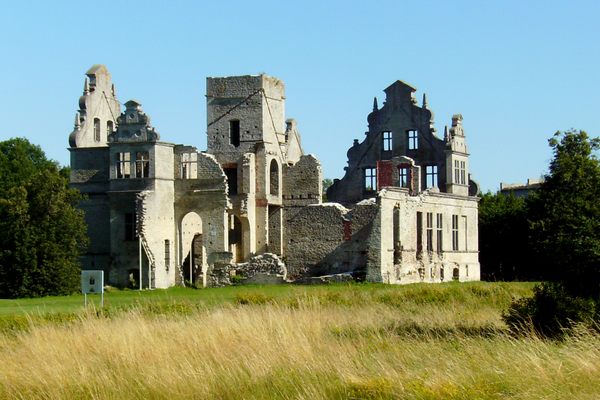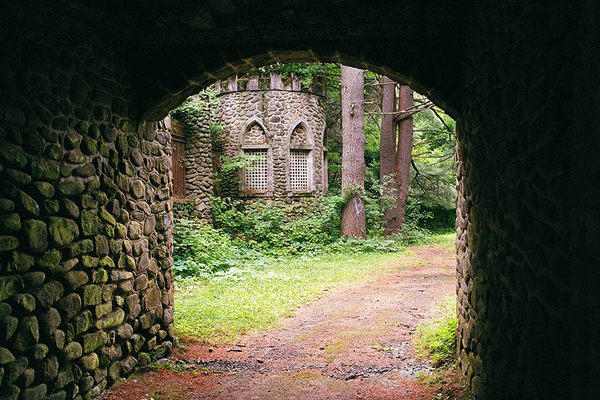Land’s End Octagon House
The one-time watch house for incoming ships at the Golden Gate now stands abandoned and hidden in trees.
The discovery of gold in the Sacramento hills brought an onslaught of ships of all kinds into the previously sleepy San Francisco Bay. At first, runners positioned on the remote dunes at the city’s northwestern corner would spot ships and head for the center of town to notify officials and merchants of incoming traffic. It became clear very early on that a more effective method of notification was needed.
In this era before the telegraph, the city’s hilltops were claimed for a series of semaphore stations, with an outermost outlook at Land’s End, then known as Point Lobos. The station tenders would watch the Golden Gate, and signal the arrival and type of incoming ships using visual flag signals.
In 1853, telegraph lines were installed between the relay stations, replacing the semaphore system.
Built in 1927, the little octagon building now hidden in trees at Land’s End was at least the third lookout station at Land’s End. It replaced an 1889 building, located near the present site of the USS San Francisco Memorial, which was removed to make way for a scenic overlook. It was officially known as the Point Lobos Marine Exchange Lookout Station.
Octagon Houses were something of a Victorian fetish, popularized by the phrenologist Orson Squire Fowler of New York. His book, The Octagon House: A Home For All, or A New, Cheap, Convenient, and Superior Mode of Building came out in 1848 – the same year that gold was first found near San Francisco – and spurred an eclectic building spree. The eight-sided design offered many benefits – more effective use of internal space, conservation of building materials, and, notably for this application, near-360-degree views.
When the Land’s End lookout station was built, it stood alone with an unobstructed view of the shoreline. The trees which obscure the view and hide the building now were planted later. Reportedly, the family of the last lookout was allowed to live in the home long after it was decommissioned. It is now empty, awaiting restoration by National Parks.
A second, older octagon house in San Francisco at the corner of Gough and Union streets recently celebrated its 150th birthday and is now a museum.
Know Before You Go
The octagon house can be difficult to spot at first, as it is very effectively hidden by trees. Follow signs for Fort Miley and look to the left of the main trail for an access road.
Community Contributors
Added by
Edited by
The Atlas Obscura Podcast is Back!






































Follow us on Twitter to get the latest on the world's hidden wonders.
Like us on Facebook to get the latest on the world's hidden wonders.
Follow us on Twitter Like us on Facebook